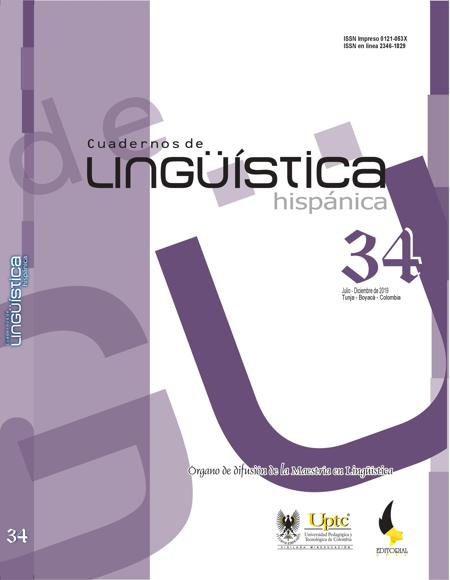Cultura popular do ensino em espanhol como língua estrangeira

Resumo
Este artigo apresenta vários aspectos de uma investigação sobre o ensino do espanhol como língua estrangeira (ELE). O projeto focou no uso da cultura popular colombiana para ensinar espanhol a um grupo de estrangeiros da Universidade Pedagógica e Tecnológica da Colômbia, usando diferentes textos narrativos e populares: mito, lenda, provérbio e presságio. O objetivo deste projeto foi projetar e aplicar um livreto, que incluía vários textos narrativos com exercícios e atividades. Em relação à metodologia, a abordagem de pesquisa foi qualitati- va, tanto na coleta e análise de informações quanto no desenho das unidades, foram conside- radas as informações produzidas pelo piloto, o que permitiu a concepção da proposta didática. Como resultado, o livreto intitulado Ensinar espanhol para estrangeiros foi produzido através da cultura popular, que reúne doze unidades que foram desenvolvidas inteiramente por es- tudantes estrangeiros. Concluiu-se que o uso de textos narrativos (o mito, a lenda, o ditado e o presságio) permitiu que os alunos melhorassem seu nível de compreensão e expressão enquanto expandiam seus conhecimentos sobre a cultura colombianaPalavras-chave
lenda, mito, cultura popular, ensino, ELE (espanhol como língua estrangeira)
Referências
Álvarez, A. (2013). La interpretación de los mitos desde la hermenéutica analógica. Cuicuilco, vol. 20, (58), 81. Recuperado de http://www.redalyc.org/pdf/351/35130975005.pdf
Batista, N. (2011). Proceso de la investigación cualitativa. Epistemología, metodología y aplicaciones. Bogotá: Manual Moderno.
Bernal, C. (2006). Metodología de la investigación 2ª edición. Bogotá: Pearson Educación.
Margulis, M (2011). Sociología de la cultura: conceptos y problemas. Buenos Aires: Biblos.
Molina, S & Ferreira, J (2008). Explotación didáctica de textos literarios en la enseñanza del español como lengua extranjera. En Clavero, A & Fernández, M (eds.), El profesor de español LE/L2 Actas del XIX Congreso Internacional de la Asociación para la Enseñanza del Español como Lengua Extranjera (ASELE), (p. 675). Cáceres: Universidad de Extremadura, servicio de publicaciones.
Olvera, L. (2012, 7 de junio). Textos populares [web log post]. Recuperado de http://textopopular.blogspot.com/2012/06/
Real Academia Española. (2014). Diccionario de la lengua española (23.ª ed.). Consultado en http://www.rae.es/rae.html
Tangherlini, T. (1990). "It happened not too far from here...": a survey of legend theory and characterization. Western Folklore, vol. 49 (4), 85. https://doi.org/10.2307/1499751
Uribe, A. (2004). Los refranes: herramienta de sensibilización y formación en gerencia de servicios y mercadeo de la información. Biblios, vol. 5, (19), 3-4. Recuperado de http://www.redalyc.org/articulo.oa?id=16101910
Van Dijk, T. (1978). La ciencia del texto. Buenos Aires: Paidós.